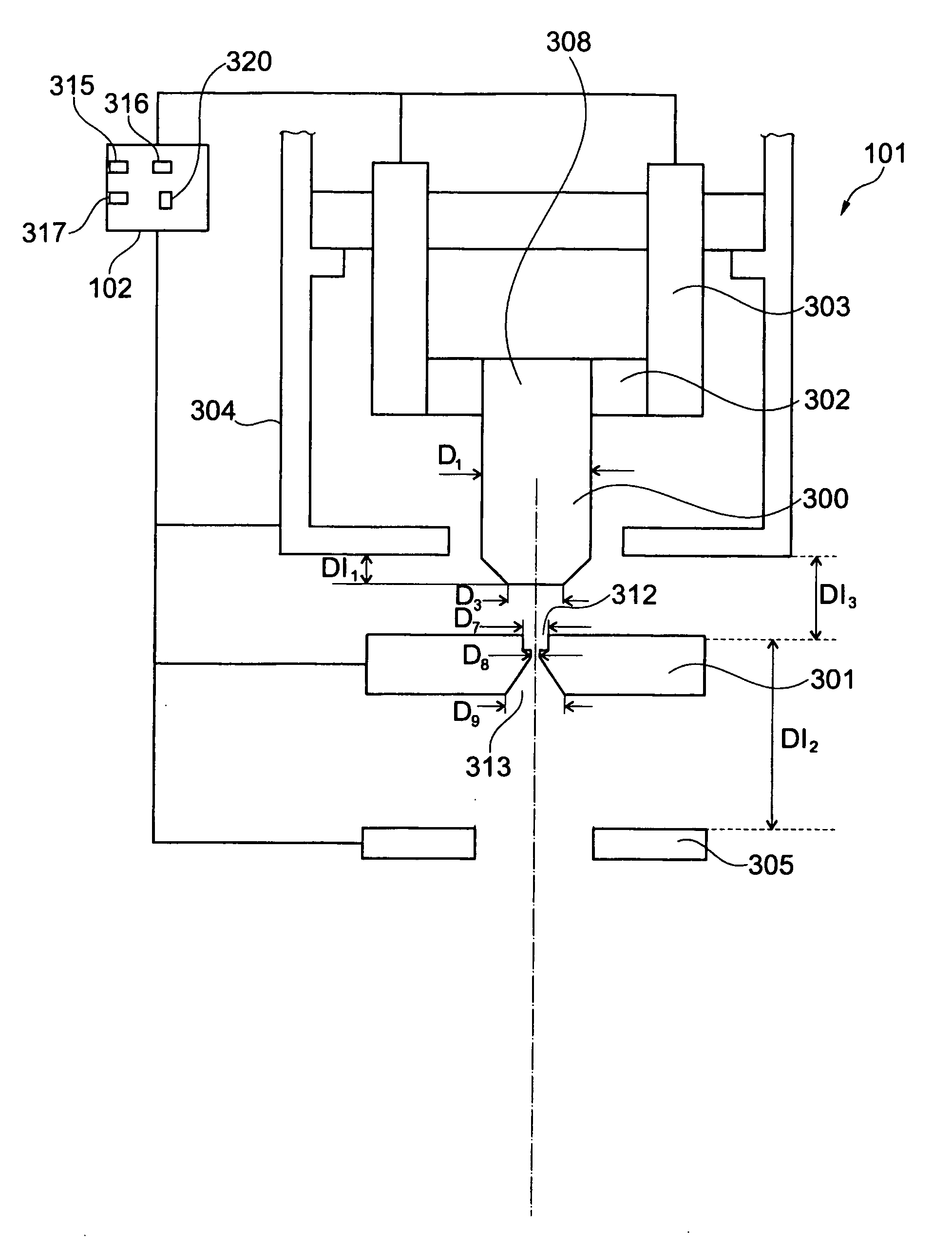Electron gun used in particle beam device
a particle beam and electron gun technology, applied in the direction of cathode ray tubes/electron beam tubes, instruments, electric discharge tubes, etc., can solve the problems of thermal field-emission sources having a further disadvantage, time, effort and cost for providing such good conditions, etc., to increase the strength of electric field, easy to achieve, and the brightness of the electron gun according to the system
- Summary
- Abstract
- Description
- Claims
- Application Information
AI Technical Summary
Benefits of technology
Problems solved by technology
Method used
Image
Examples
Embodiment Construction
[0044]The system described herein will now be further explained with respect to particle beam devices, in particular to two electron beam devices. It should be noted that the system described herein is not limited to these electron beam devices, and instead may be arranged and / or used in any suitable particle beam device.
[0045]FIG. 1 shows a schematic drawing of a scanning electron microscope 100 (hereinafter referred to as SEM) according to an embodiment of the system described herein. The SEM 100 may comprise an electron gun 101 providing electrons. The electron gun 101 may be connected to a supply unit 102 which supplies high voltages to the electron gun 101. The electron gun 101 and the supply unit 102 will be described in detail below.
[0046]The SEM 100 may also comprise a condenser 114 and an objective lens 104 in the direction of the optical axis 107 of the SEM 100, starting from the electron gun 101. The objective lens 104 may comprise pole shoes 105 having coils 106. A sampl...
PUM
 Login to View More
Login to View More Abstract
Description
Claims
Application Information
 Login to View More
Login to View More - R&D
- Intellectual Property
- Life Sciences
- Materials
- Tech Scout
- Unparalleled Data Quality
- Higher Quality Content
- 60% Fewer Hallucinations
Browse by: Latest US Patents, China's latest patents, Technical Efficacy Thesaurus, Application Domain, Technology Topic, Popular Technical Reports.
© 2025 PatSnap. All rights reserved.Legal|Privacy policy|Modern Slavery Act Transparency Statement|Sitemap|About US| Contact US: help@patsnap.com



